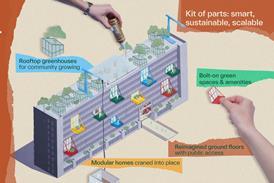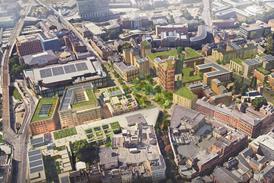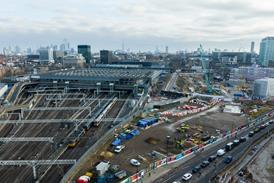There is much to commend the NPPF but successful implementation at local level could be challenging says Thomas Lane

The new national planning policy framework (NPPF) has been broadly welcomed, and with good reason. It captures many of the ideas that industry experts have been calling for to create better places for people. A whole section is dedicated on promoting healthy places and wellbeing, for example by encouraging site layouts that promote walking and cycling. It also recognises the need for planning policy to align with the Climate Change Act and DEFRA’s 25-year environment plan, plus it offers greater protection for ancient trees and woodlands.
Calls to make viability assessments more transparent have been heeded and will shift the balance of power regarding affordable housing contributions back towards local authorities.
Some will be disappointed that the Green Belt is still treated as sacrosanct – it still can’t be built on unless in exceptional circumstances. This is hardly surprising given the weakness of the government, and the opposition to Green Belt development among large swaths of Tory-voting rural Britain.
For architects, the good news is the greater emphasis on high-quality design, which is described as being “fundamental to what the planning and development processes should achieve”. Planning should only be given to good-quality schemes that improve the character and quality of an area, an aspiration that will be given sharper teeth by the requirement for councils to stop designs being watered down between permission and completion through subsequent amendments to consented schemes.
The views of locals move to centre stage as they get to develop design polices with councils, which must be developed to reflect local aspirations. Developers should work closely with local communities to produce schemes that take account of their views. If they don’t, they are less likely to get planning.
Giving local communities a say is welcome but carries the risk that they will eschew bold design for safer traditional styles and materials.
Another risk to the quality design agenda is the fact that the performance of councils will be measured against how many homes are delivered in their area, rather than the number of consented units, and underperformance will be penalised. As this leaves councils at the mercy of large housebuilders, who will deliver most of these homes, they will face pressure to water down requirements for expensive deviations from standard house types in a bid to meet the targets.
The key to the success of the new NPPF is the ability of local planning departments to deliver it. Given how thinly stretched they are, planning departments will need more support – additional guidance and people. Like good design, the success of the NPPF hinges on how this plays out. As the saying goes, the devil is in the detail.
















2 Readers' comments